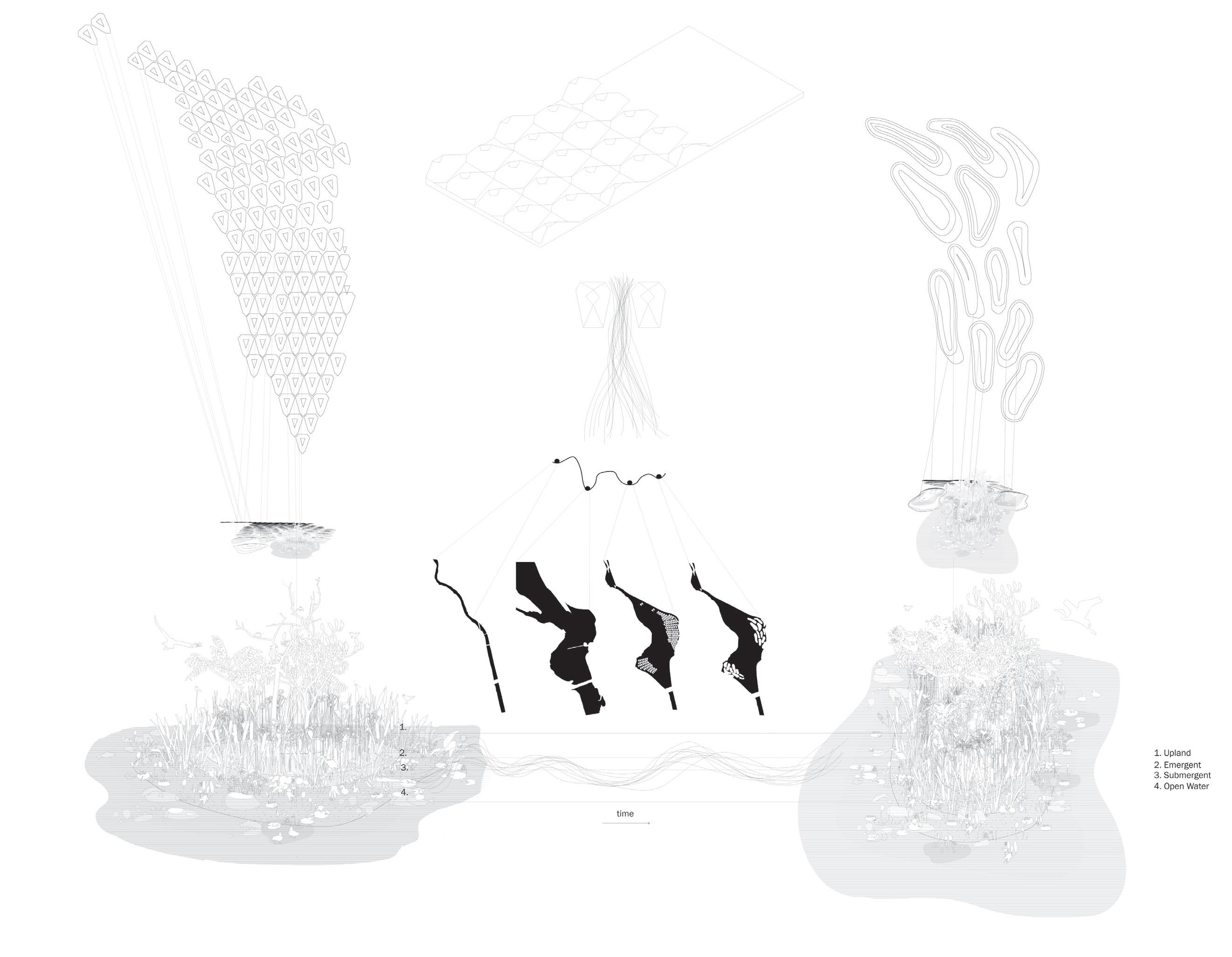
2 minute read
Riverdale Park: Bend>Break
Riverdale Park, Toronto, ON. 2019.
Awarded: Professor Jeffery A. Stinson Graduate Student Endowment Fund
Advertisement
Traditionally we have thought of a river as a line on a map, defined by it’s riverbanks. Flood events are the disruption, the outliers treated as disasters.

Breaking the line of the riverbank.
The redesign of Riverdale Park was in response to increased flooding of the Don River. In this design Riverdale Park has been transformed into a space where the river can carve out its own path, creating a dynamic system and helping to shift the present paradigm of resilience, from static to dynamic.

Proposed plan of water infiltration and landforms.
Raised paths were brought into the space winding through the landforms, creating spaces for education, contemplation and exercise. Bringing the river to the people, allowing change to happen as a heavily engineered space shifts into a “naturalized” river system.

Fluctuating water levels and raised pathways, bringing people into the space of the river, further blurring lines

A base grid of optimized landforms was chosen from MIT’s landform catalogue for their optimized water infiltration and high biodiversity index. Over time through fluctuating water levels the river would redistribute these landforms, shaping a new system. Through careful research of riverine dynamics, one hypothetical sediment distribution was chosen to illustrate the future of this design.

13. a) Optimized landforms tested for water flow, infiltration and shape. b) Exploring the relationship between riverine dynamics/ water flow and proposed landforms. c) Modified potential energy diagram acknowledging different energy inputs in the form of natural and anthropogenic events. d )Fluctuating water levels translate temporal heterogeneity to spatial heterogeneity
1. Guzman, C. B., Nepf, H., and Berger, A. M. 2016. Design Guidelines for UrbanStormwater Wetlands 2. Hughes, F. M. R., A. Colston, and J. Owen Mountford. 2005. Restoring riparian ecosystems: the challenge of accommodating variability and designing restoration trajectories. Ecology and Society 10(1): 12.









